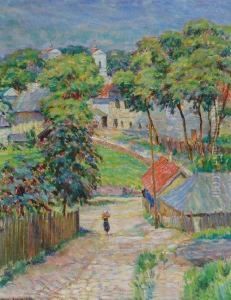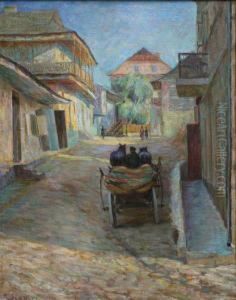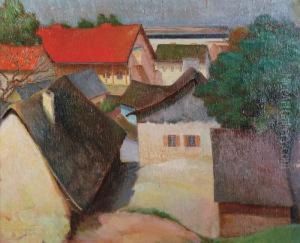Marek Szapiro Paintings
Marek Szapiro was a Polish-Jewish painter and graphic artist, born in 1909 in Warsaw, Poland. He was active in the interwar period and is known for his unique style that blended elements of Expressionism and Constructivism. His works often reflected the complexities of identity and the human condition, particularly within the context of the Jewish experience in Poland.
Szapiro's artistic journey began in his native Warsaw, where he studied at the Academy of Fine Arts. During his time there, he was influenced by the avant-garde movements that were sweeping across Europe in the early 20th century. He developed a style that was characterized by bold colors, dynamic compositions, and a sense of emotional intensity. His early works included portraits, landscapes, and scenes of urban life that captured the vibrancy and tumult of the interwar years.
In the 1930s, Szapiro's work began to gain recognition, and he participated in several exhibitions, both in Poland and abroad. He became part of the vibrant cultural scene in Warsaw, which was a hub for intellectual and artistic exchange. However, his career was tragically cut short by the outbreak of World War II and the subsequent occupation of Poland by Nazi Germany.
During the war, Szapiro was confined to the Warsaw Ghetto along with the rest of the city's Jewish population. Despite the horrific conditions, he continued to create art, documenting the lives of the people around him and the atrocities they faced. His work from this period provides a poignant and powerful witness to the suffering and resilience of the Jewish community during the Holocaust.
Marek Szapiro's life came to a tragic end during the Warsaw Ghetto Uprising in 1944, when he was killed fighting against the Nazi forces. His exact date of death is not well-documented, but it is known that he perished during this heroic but ultimately doomed resistance. Szapiro's legacy lives on through his art, which serves as a testament to the enduring human spirit in the face of unimaginable adversity.


